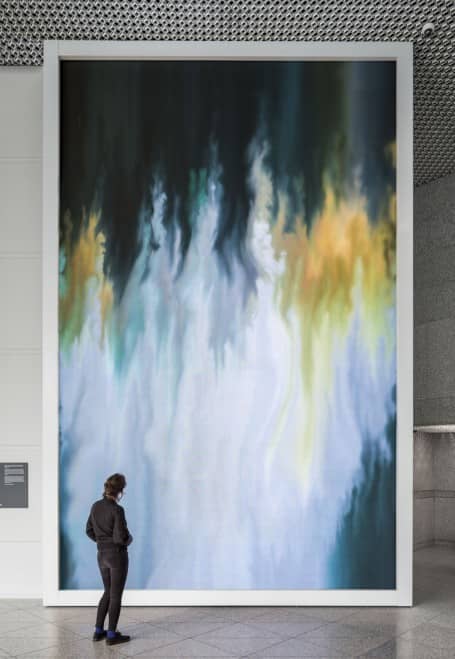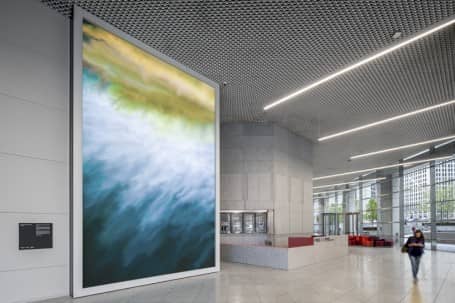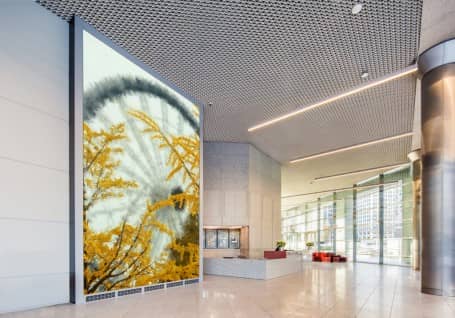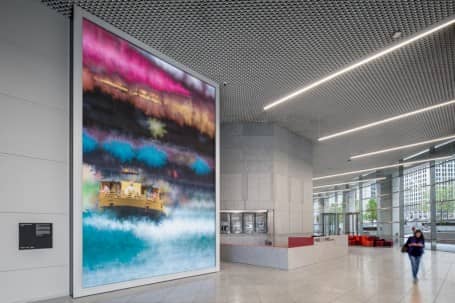ESI Design was commissioned by 515 State Street building Chicago to give the lobby of the building a warm and intimate look which can attract its visitors and new tenants. The artist behind this huge art piece is an algorithm. The design team decided to fill the space in this lobby with a contemporary art gallery and installed a 7-meters high display. The screen displays different videos of the local area and then the software paints these images in an impressionist style. It continues painting till the scene is unrecognizable and the before the next scene is made visible. The process keeps repeating itself again and again.

Almost 5000 possible abstract compositions can be generated from this. There are images of people, bridges, and parks that are painted by the software and turned into mesmerizing abstract images which are full of color and movement. Five content modules are built on the display. The scenes are selected so that the local area and famous local landmarks like bridges, scenes of green space and sky can be reflected through the display.

515 North State Street was designed in 1960 by Kenzo Tange who is Pritzker prize-winner Japanese architect. The building owner wanted to re-energize the building to attract new tenants which include tech start-ups and media companies. They engaged ESI Design to add a level of drama, warmth, and sophistication to the building’s lobby. The team at ESI has also added some transparent LCD screens into the elevator bays. These screens provide updated local information like the weather forecast, trending topic on Twitter, transit alerts etc. The furniture in the lobby was also updated. Red colored, pixel-like forms are present for guests to take a moment and enjoy the artwork.
The addition of a transparent front door allows pedestrians to catch a glimpse of the dynamic artwork inside, as a result, the building is also gaining attention from the passer-bys. The lead designer on the project, Ed Purver, described the project and said, “our custom software analyzes each video for moving objects, so moments like a person walking, or a car driving become the ‘brushstrokes’ that slowly create each abstraction. As each video collides with the next, new compositions unfold in real time, literally creating thousands of possibilities in this one-of-a-kind evolving digital artwork.”

The transition of the painting is kept deliberately slow so that a feeling of meditation can be induced and viewers can be encouraged to wait for the painting to reveal itself. The content management system randomly selects the starting point in each video as a result, the abstractions are always different each time. The display is made up of LEDs which are covered with a layer of vinyl. It reduces the glare and gives the display a richer and more material quality. The display is framed with a painted metal molding which gives it an impression of a traditional framed artwork.



